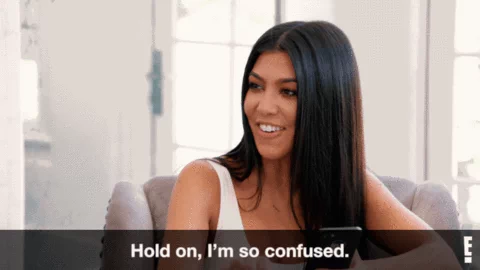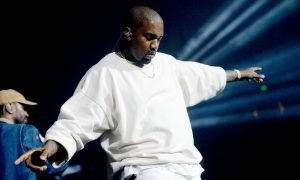Recently I was asked to participate in the “Great Debate”, an academics versus students comedy debate that is part of ANU Asia Pacific Week, on the topic of “Does foreign aid do more harm than good”. Myself and the other academics were on the negative team, and managed to keep the crowd on side (who were already supportive of aid at the beginning).
The students put forward some good arguments, particularly around the colonial history of aid, some of the failures of aid, the changes brought forth from non-aid economic growth and technological advancement. But one thing that really stood out, and that stands out time and time again when seeking to explain foreign aid to groups of people with limited knowledge of it — even those who maybe have done a development studies class or two — is that people don’t really understand how aid gets from the developed country to the developing one.
There seems to be a popular misconception that aid is simply a transaction between two countries. That on 1 July each year, Australia opens its internet banking app, flicks Papua New Guinea half a billion bucks and just writes in the transfer description “Frm Oz plz spend on health n ed”.
This misconception is problematic for a couple of reasons. Firstly, it fuels the idea that aid is just handed over to corrupt governments or dictators without any degree of accountability. Second, it doesn’t give a clear sense that there are rules around what aid can and can’t be spent on. And third, it really understates the complexity of the global aid system, which leads to sweeping generalisations about everything when one thing goes wrong.
So my goal in the debate was to try to get across the complexity of aid, especially to explain why some project failures don’t mean that most aid is causing harm.
I started thinking of ways to describe the range of actors involved in the aid space. Having recently returned from a family funeral that has its own coordination challenges, an extended family immediately came to mind. And the world’s most famous extended family are no doubt the Kardashians.
So, imagine you are in a country called Calabasas, and every Kardashian-Jenner is an aid project. This is what you’d be faced with (I’ve added some Kardashian kontext for those who might not have been keeping up lately).
 Kris Jenner (Kardashian-Jenner matriarch and momager extraordinaire) — A very tightly run managing contractor (some might say micromanaged) that delivers results to its beneficiaries, even if the social benefit of its projects is questioned by some. The country government wasn’t involved in their project design process but has just had to go along for the ride. Agency slogan: The devil works hard but Kris Jenner works harder.
Kris Jenner (Kardashian-Jenner matriarch and momager extraordinaire) — A very tightly run managing contractor (some might say micromanaged) that delivers results to its beneficiaries, even if the social benefit of its projects is questioned by some. The country government wasn’t involved in their project design process but has just had to go along for the ride. Agency slogan: The devil works hard but Kris Jenner works harder.

Kim Kardashian (catapulted the family into the spotlight through a sex video leak, now a hard-nosed businesswoman) — A strategic aid contractor that uses very good communications and multimedia to attract high-level, bipartisan political support for its projects. Its first initiative has spawned many side-projects that seem only tangentially related to the contractor’s areas of expertise. But due to recognition among donors and a reputation for efficiency, it has no trouble winning more contracts.
Khloe Kardashian (Kardashian sister with a spin-off TV show called ‘Revenge Body’ and clothing line ‘Good American’) — A loud and bold NGO with a human rights-based approach that is very vocal about its cause, but the actual development outcomes of its advocacy work are unclear. Has some particularly confusing messaging around women’s empowerment.

Kourtney Kardashian (indecisive Kardashian sister obsessed with clean eating) — This aid project is still trying to decide if it should be bringing gluten-free foods to undernourished children, or starting a kitten yoga program for former rebels. Does Bali need aid? How about Bora Bora? Do people in these countries have access to organic skincare? Where to begin?
Rob Kardashian (brother who has made some poor choices) — An aid project that has struggled to achieve its outcomes, partly due to operating in a difficult context, partly due to personnel management issues. Heavily dependent on a single major donor.
Scott Disick (Kourtney Kardashian’s on-again-off-again partying partner/baby daddy who is currently dating a 19-year-old) — The idea for this project should be a deal-breaker, but there’s something oddly charming about it, so people keep doing it even though they probably shouldn’t.
Kanye West (Kim’s husband) — Kanye is an aid project the donor has walked away from because it is too controversial and political. In short, Kanye is cancelled. —
Caitlyn Jenner (Kris’ second husband, a trans woman) — this project completely changed course and is now doing much better. But the manager probably shouldn’t have written a tell-all book on the sector during its transitional phase, as things get quite awkward during coordination meetings now.

Kendall Jenner (daughter of Kris and Caitlyn, model) — Small NGO doing fundraising for other bigger projects actually run by other NGOs by leveraging their significant Instagram presence.
 Kylie Jenner (other daughter of Kris and Caitlyn, lipstick mogul, recently had a surprise baby) — This agency kept its latest project secret for nine months even though the country government was pretty sure something was going on. Once it was announced and started operations it was just a rebrand of a project that it had done before, but with new colours in the communications guidelines.
Kylie Jenner (other daughter of Kris and Caitlyn, lipstick mogul, recently had a surprise baby) — This agency kept its latest project secret for nine months even though the country government was pretty sure something was going on. Once it was announced and started operations it was just a rebrand of a project that it had done before, but with new colours in the communications guidelines.
North, Saint, Chicago, Mason, Penelope, Reign, Dream, Stormi and True (Kris’ grandkids) — these are projects and initiatives still at the planning phase. (Let’s be real though, most of their names wouldn’t seem out of place at all as aid project names or sector acronyms.)
As you can see, it’s messy. And if you have watched 14 seasons of this show (no comment from the author) you will have seen the kind of coordination problems that regularly arise.
This was clearly a blatant stretch for me to combine my love of pop culture and interest in aid, and to win favour with the youthful audience in our debate. But we do need to communicate better on how things work in the aid world, as the one thing I find when talking about it to the public is that people still don’t really get it, even if they support it. Beyond the most high-level idea of wealthy countries giving money to poorer countries, there is very little conceptualisation of the global aid system and how it functions.
So maybe the Kardashians can kontextualise this for people, okkrrrrrr?
(Fun for the comments – take a Kardashian-Jenner kids name and turn it into an aid project acronym…)








Wonderful! I have thought for a long time that Trump does what he does to get more clicks than the Kardashians.
Genius, Ashlee! And so insightful. I’m definitely saving this one, and sharing it widely. Thank you!
My first try on the name: Keeping Ante-Natal Youth Engaged (KANYE). This failed project attempted to encourage ante-natal care visits by engaging older children to encourage their mother to seek care. It turns out mothers (and parents) the world round don’t like being told what to do by their 8 year olds.
Thanks for writing this – I teach international development courses, think I may use it in class this year. If you find yourself in DC holler (you can find my email on danhonig.info), maybe we can get you to do aid-as-the-Kardashians live?
Refreshing analogy!
Hilarious! This has softened/prepared the ground for Part Two containing real examples and case studies.
Multilateral Alignment Sectoral Organisation Node
Reporting Equivalence In Gendered Networks
Strategic Transport Organisation Rapid Modernisation Initiative
So good. Though I feel like STORMI should be something related to climate change adaptation or disaster resilience? STOrm Resilience Mapping Initiative? Strengthening Trajectories for Online Resource Mobilisation Integration?
TRUE looks like something in the anticorruption space, but I can only come up with Transforming Rural Under-Employment.
SAINT would probably be run by a Catholic NGO, and might stand for Securing Adult and Infant Nutritional Targets.